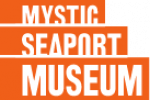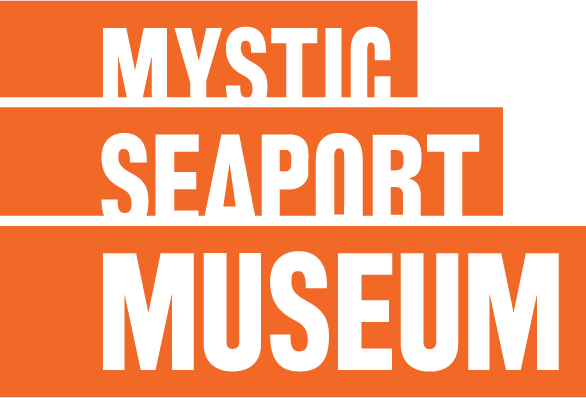 This year the Treworgy Planetarium introduced a new class, “Introduction to Coastal Weather,” taught by Lt. Walter O’Donnell, a former navigation instructor for the U.S. Navy. We met Walt during classes and shows we hosted for sailors. The class, held in the early spring, was so popular that we have scheduled a second one for June (sign up here).
This year the Treworgy Planetarium introduced a new class, “Introduction to Coastal Weather,” taught by Lt. Walter O’Donnell, a former navigation instructor for the U.S. Navy. We met Walt during classes and shows we hosted for sailors. The class, held in the early spring, was so popular that we have scheduled a second one for June (sign up here).
We asked Walt to take a few minutes and answer five questions so we could get to know him a little better.
1. Tell us a little about yourself, your career and educational background (including where you grew up and where you live now).
I was born in Boston and raised in Massachusetts. My parents took us sailing when we were young, and my grandfather always had a couple of boats that he kept at his house in Sag Harbor, N.Y. I have been sailing ever since, mostly coastal waters. I attended Catholic University in Washington, D.C., and graduated with a B.A. in History. I joined the U.S. Navy in 2011, and in six years, I lived in Newport, R.I., Norfolk, VA, San Diego, CA, and  finally Newport, again. I was assigned to a 9,000-ton, 505-foot guided missile destroyer (DDG) in Norfolk, and deployed to the Mediterranean Sea. In San Diego, I was assigned as Navigator on a 25,000-ton, 685-foot amphibious landing platform dock (LPD), and we took her through the Pacific and Indian oceans to the Gulf of Aden in the Middle East for my second deployment. I spent my last two years in the Navy training future Navigators at Surface Warfare Officer School in Newport, specializing in weather and celestial navigation. I am currently attending Fairfield University in Fairfield, CT, pursuing my Master of Arts in Teaching for Secondary Education, Social Studies, and plan on being a high school history teacher. I live with my wife and 1-year-old daughter in Milford, CT.
finally Newport, again. I was assigned to a 9,000-ton, 505-foot guided missile destroyer (DDG) in Norfolk, and deployed to the Mediterranean Sea. In San Diego, I was assigned as Navigator on a 25,000-ton, 685-foot amphibious landing platform dock (LPD), and we took her through the Pacific and Indian oceans to the Gulf of Aden in the Middle East for my second deployment. I spent my last two years in the Navy training future Navigators at Surface Warfare Officer School in Newport, specializing in weather and celestial navigation. I am currently attending Fairfield University in Fairfield, CT, pursuing my Master of Arts in Teaching for Secondary Education, Social Studies, and plan on being a high school history teacher. I live with my wife and 1-year-old daughter in Milford, CT.
2. How did you become interested in weather?
Weather is an inescapable part of going to sea, and I was always intrigued by how powerful Mother Nature can be. I had to brief my ship’s commanding officer every day on the weather forecast while in the Navy, so there was a necessity to becoming an expert on weather. I also love historical fiction, especially the “Master and Commander” series, and those books helped me appreciate how much a “weather eye” is the mark of a mariner. What really sealed the deal for me was when we were transiting across the Indian Ocean and encountered 20-foot waves and 60 knots of wind. I would never underestimate the importance of weather knowledge after those few days of pitching, rolling and yawing aboard a massive Naval ship.
3. Do you have a favorite kind of weather?
I would have to say relatively heavy weather. Ten to 12-foot seas, 30 knots of wind could rock my Navy ships pretty well, but we could handle it. There is a peace to trusting your equipment, because there is no way to “outrun” the storm at that point. And if I have done my job well up until then, then we knew that this weather was headed our way. After all, “a smooth sea never made a skilled sailor.”
4. What do you think are the most important aspects of weather that laypeople should understand?
How to “read” Mother Nature’s signs about what is headed your way when you’re already out on the water. Reading a weather forecast is pretty straightforward, but if you’re already sailing around on Long Island Sound, then you have to keep an eye to windward. If you understand how the barometer works, and combine it with a basic understanding of cloud types, you can keep yourself and your boat safe. We spend a good portion of the class going over these visual cues because they are so important to safe boating.
5. What’s the best part about teaching a class such as this?
Probably at the end of the class when we listen to the NOAA weather forecast on the VHF radio. At the start of class, many participants could not understand some parts of this vital report on what their current local weather is and what it will be. But at the end of class, they understand what every prediction means, and how it will affect their next trip out on the bay. Now they’ll have more fun out on the water because they have peace of mind about the weather!
Bonus: What is your favorite song, book and movie that involves weather?
Favorite song about weather would be “What Fortunes Guide a Sailor” by Matthew Byrne; it’s a great folk song about a long voyage.
Favorite book would be “Tying Down the Wind” by Eric Pinder because it makes weather fun, not too scientific.
Favorite movie is definitely “The Perfect Storm” because my grandparents lived in Gloucester, MA, the quintessential sailor’s town where the Andrea Gail came from, so we spent a lot of time up there.










